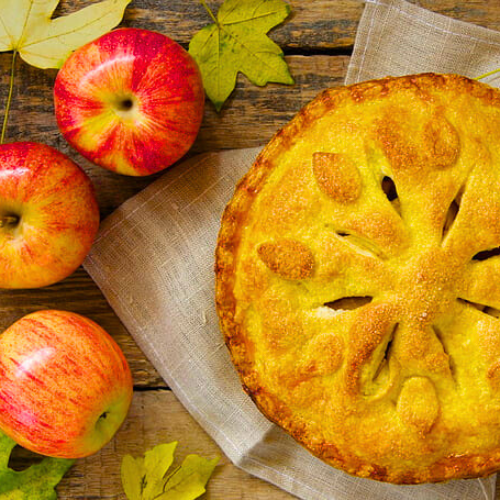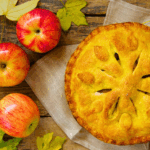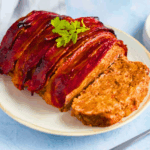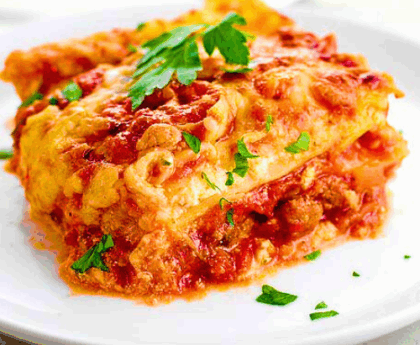Should You Cook Apples Before Putting Them in a Pie? A Complete Guide
Introduction
Should You Cook Apples Before Putting Them in a Pie? Apple pie is one of the most beloved desserts worldwide. But one question frequently arises among both novice bakers and seasoned pros: Should you cook apples before putting them in a pie? The answer isn’t as simple as a “yes” or “no” because it depends on various factors such as the type of apples used, the desired pie texture, and your baking method.
In this ultimate guide, we will explore the pros and cons of pre-cooking apples for apple pie, analyze how it affects flavor and texture, and offer expert tips for achieving the perfect apple pie every time. By the end, you’ll have a clear understanding of whether you should cook apples before putting them in a pie.
Why This Question Matters: Cooked vs. Raw Apples in Pie
The decision to cook apples before putting them in a pie impacts several crucial elements:
- Texture: Pre-cooked apples can prevent a runny filling and create a more cohesive texture.
- Flavor: Cooking apples releases and concentrates their flavors.
- Appearance: Pre-cooked apples minimize shrinkage during baking, reducing gaps under the top crust.
- Convenience: Using raw apples saves time but may compromise consistency.
Understanding these factors is essential for mastering apple pie baking.
The Pros of Cooking Apples Before Making a Pie
1. Improved Texture Control
One of the main advantages of pre-cooking apples is control over texture. Apples lose water when they cook. If you put raw apples directly into the pie, they may release liquid during baking, making the crust soggy and the filling runny.
When you cook the apples beforehand, much of the moisture is released and thickened, leading to a perfectly set pie filling.
2. Enhanced Flavor Development
Cooking apples before assembling the pie allows the flavors to meld and intensify. Sugar, spices like cinnamon and nutmeg, and even lemon juice can infuse the apples more effectively when heated, creating a deeper, richer taste.
3. Consistent Sweetness and Spice
By cooking the apples first, you can taste the filling and adjust sweetness or spice levels as needed. This ensures your pie is not too bland or overly sweet.
4. Reduced Shrinkage
Raw apples shrink when they bake, sometimes creating an unsightly gap between the filling and the top crust. Pre-cooking softens the apples and reduces their volume, helping to eliminate this common issue.
5. Even Cooking
Different types of apples cook at different rates. Pre-cooking helps ensure that all apple pieces soften uniformly, creating a better mouthfeel.
The Cons of Pre-Cooking Apples for Pie
1. Extra Time and Effort
Cooking apples before making the pie adds an extra step to the baking process. It requires more utensils and extends preparation time.
2. Potential Overcooking
There’s a risk of overcooking the apples if you’re not careful. Pre-cooked apples will continue to soften in the oven, so it’s essential to par-cook them rather than fully cook them.
3. Loss of Fresh Apple Texture
Some bakers prefer the firmer texture that raw apples offer after baking. Pre-cooked apples can become softer, sometimes verging on mushy if not handled properly.
When You Should Cook Apples Before Making an Apple Pie
Pre-cooking apples is especially recommended when:
- You’re using high-moisture apple varieties like McIntosh or Fuji.
- You want to prevent a soggy crust.
- You’re aiming for a refined, gourmet-style pie with a smooth, cohesive filling.
- Your recipe calls for it, such as some French-style apple pies or tarts.
When It’s Fine to Use Raw Apples in Your Pie
You can confidently use raw apples in your pie if:
- You prefer a firmer, chunkier apple filling.
- You’re using low-moisture, baking-friendly apples like Granny Smith, Honeycrisp, or Braeburn.
- You’re short on time.
- You like a more rustic, traditional approach to pie baking.
Best Apple Varieties for Pie: Cooked vs. Raw
Apples Best Pre-Cooked
- McIntosh
- Fuji
- Red Delicious
- Gala
These varieties are soft and release a lot of juice when cooked, which can make pies too wet if not pre-cooked.
Apples That Can Be Used Raw
- Granny Smith
- Honeycrisp
- Braeburn
- Jonagold
- Pink Lady
These apples hold their shape and structure better, even when baked raw.
How to Pre-Cook Apples for Pie: A Step-by-Step Guide
If you’ve decided to cook your apples before putting them in your pie, here’s the best method:
Step 1: Peel and Slice Apples
- Peel, core, and slice your apples uniformly to ensure even cooking.
Step 2: Toss With Sugar and Spices
- Combine with sugar, cinnamon, nutmeg, and a splash of lemon juice.
Step 3: Sauté or Simmer
- Place the apple mixture in a large skillet over medium heat.
- Cook gently for about 8-10 minutes, stirring occasionally.
- Cook until apples start to soften but still retain their shape.
Step 4: Thicken the Mixture
- Add a thickener like cornstarch or flour if needed to absorb excess liquid.
Step 5: Cool Completely
- Let the pre-cooked filling cool to room temperature before adding it to your pie crust to prevent melting the dough.
Raw Apple Pie Filling: Tips for Success
If you choose to use raw apples, follow these tips:
1. Use the Right Apples
Stick to firmer varieties that can hold up to baking.
2. Add a Thickener
Use flour, cornstarch, or tapioca to absorb juices released during baking.
3. Vent the Pie Properly
Ensure your top crust or lattice has adequate ventilation to allow steam to escape.
4. Allow Resting Time After Baking
Let your pie rest for at least 2 hours after baking to let the filling set.
Expert Opinions: What Do Professional Bakers Say?
Many professional bakers swear by pre-cooking apple pie fillings. For instance, America’s Test Kitchen and King Arthur Baking Company both advocate for pre-cooking as a way to avoid common apple pie pitfalls.
However, traditionalists, especially those favoring rustic or country-style pies, often stick with raw apples for a chunkier, firmer bite.
Ultimately, it comes down to personal preference and the specific result you want.
Common Mistakes to Avoid
1. Overcooking Apples
Only par-cook apples until slightly softened to avoid mushy filling.
2. Adding Hot Filling to Dough
Always cool pre-cooked apple filling before adding it to the crust to prevent soggy or melted dough.
3. Skipping the Thickener
Even pre-cooked apples release some juice—don’t skip a thickening agent.
4. Choosing the Wrong Apple Variety
Not all apples are created equal; choose accordingly for your method.
Recipes That Use Pre-Cooked Apple Filling
- Classic French Apple Tart
- Dutch Apple Pie with Crumble Topping
- Caramel Apple Hand Pies
These recipes benefit from pre-cooked fillings for texture consistency and flavor complexity.
Recipes That Use Raw Apple Filling
- Traditional American Double-Crust Apple Pie
- Rustic Apple Galette
- Deep Dish Apple Pie
These showcase the natural juiciness and bite of raw apples.
Should You Cook Apples Before Putting Them in a Pie? Final Verdict
Cook the apples if:
- You want a smooth, consistent texture.
- You’re using high-moisture apples.
- You want to prevent a soggy crust.
Use raw apples if:
- You prefer a firmer texture.
- You’re short on time.
- You’re using baking-friendly apple varieties.
Ultimately, there’s no one-size-fits-all answer. The choice depends on the pie style you’re after and the type of apples you’re using.
SEO-Optimized FAQ: Should You Cook Apples Before Putting Them in a Pie?
Do you need to cook apples before making apple pie?
No, you don’t need to cook apples before making apple pie, but it is often recommended. Pre-cooking helps prevent a watery filling and ensures a cohesive texture, especially with softer apple varieties.
What happens if you don’t cook apples before making pie?
If you don’t cook apples before making pie, they may shrink and release excess liquid during baking, potentially resulting in a gap between the filling and the crust and a soggy bottom.
Is it better to pre-cook apples for pie?
It can be better to pre-cook apples for pie if you want more control over the texture and flavor. Pre-cooking reduces shrinkage, thickens the filling, and allows you to adjust the sweetness and spice levels.
How long should you cook apples before putting them in a pie?
Cook apples for about 8-10 minutes over medium heat until they are slightly softened but still retain their shape. Avoid overcooking to prevent a mushy filling.
Can you make apple pie with raw apples?
Yes, you can make apple pie with raw apples. Choose firm apple varieties like Granny Smith or Honeycrisp, use a thickener to absorb excess juices, and ensure the pie has proper venting for steam to escape.
What are the best apples to use in apple pie without pre-cooking?
The best apples for pie without pre-cooking include Granny Smith, Honeycrisp, Braeburn, Jonagold, and Pink Lady. These varieties retain their shape and structure well during baking.
Why do some recipes recommend cooking apples before baking the pie?
Some recipes recommend cooking apples before baking to prevent excess moisture from making the crust soggy, to intensify flavors, and to ensure even cooking of all apple pieces.
Conclusion: The Art of Apple Pie Baking
The decision of whether to cook apples before putting them in a pie ultimately hinges on your personal preferences, apple variety, and desired outcome. Both methods have their merits and can produce an outstanding apple pie.
If you want to avoid the common pitfalls of a soggy crust and uneven filling, pre-cooking might be the right choice. On the other hand, if you love the rustic charm of chunky apple pieces with a firmer texture, using raw apples is perfectly acceptable.
No matter which method you choose, understanding the role of pre-cooking apples can help you elevate your apple pie from good to extraordinary.
Bonus: Quick Tips for Perfect Apple Pie
✅ Use a mix of apple varieties for a balance of flavor and texture.
✅ Always chill your pie dough before assembling.
✅ Let the pie rest after baking to allow the filling to set.
✅ Brush the crust with an egg wash for a golden finish.
✅ Add a dash of lemon juice to enhance apple flavor.
Now that you know the pros and cons of cooking apples before putting them in a pie, what will you try next? Whether you’re team pre-cook or team raw, enjoy the delicious results of your apple pie baking adventure!





